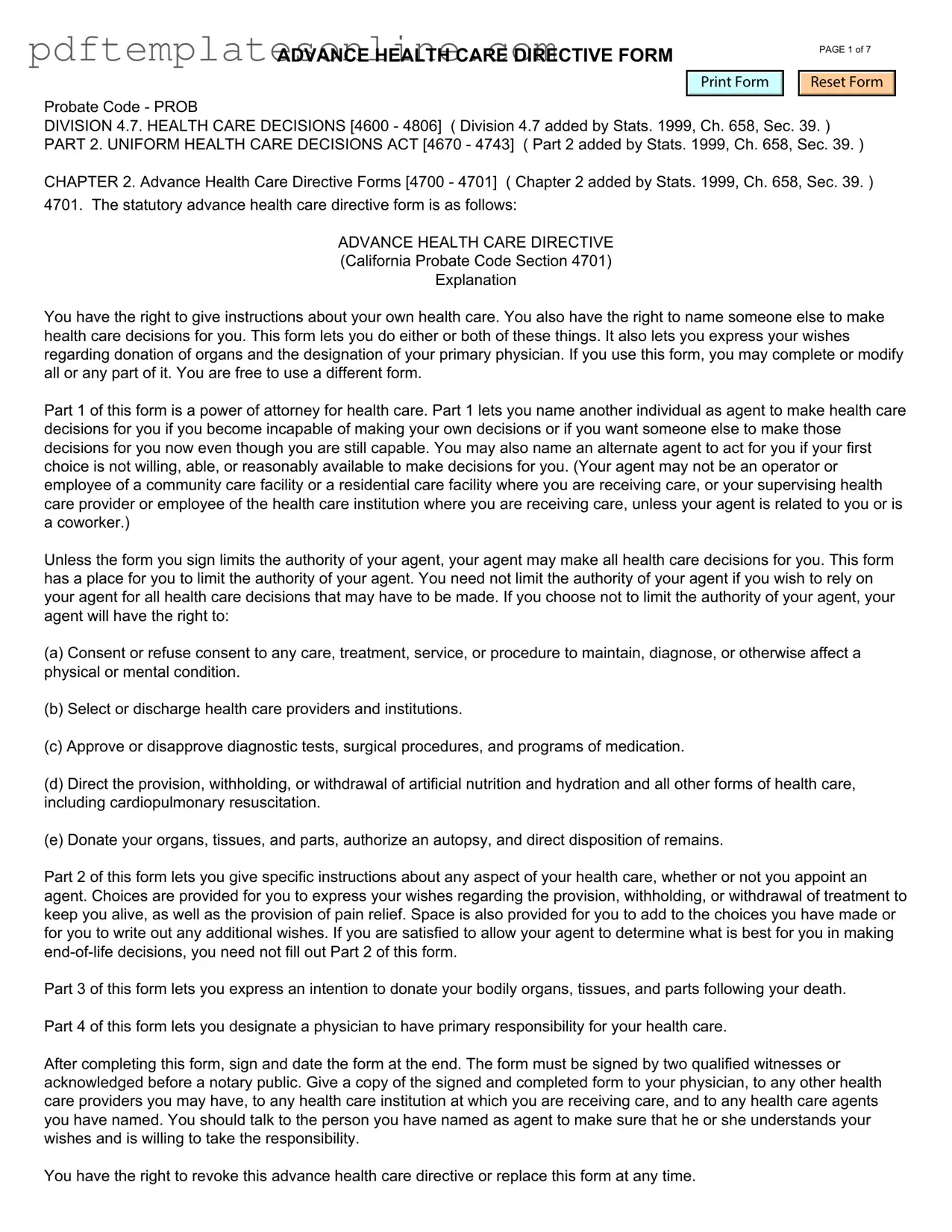Filling out the California Advanced Health Care Directive form is an important step in ensuring that your medical preferences are honored. However, many individuals make common mistakes that can lead to confusion or complications. Understanding these pitfalls can help you navigate the process more effectively.
One frequent mistake is not discussing your wishes with your designated agent. It is crucial to have an open conversation about your healthcare preferences. Without this dialogue, your agent may not fully understand your values and desires, leading to decisions that do not align with your wishes.
Another error occurs when individuals fail to update their directive after significant life changes. Events such as marriage, divorce, or the birth of a child can impact your healthcare preferences. Regularly reviewing and updating your directive ensures it reflects your current situation and intentions.
Many people overlook the importance of having witnesses or notarization. California law requires that the directive be signed in the presence of either two witnesses or a notary public. Neglecting this step can render the document invalid, making it essential to follow these legal requirements closely.
Some individuals mistakenly assume that a verbal agreement is sufficient. A written directive is necessary to provide clear guidance to healthcare providers and family members. Relying solely on verbal discussions may lead to misunderstandings or disputes during critical moments.
In addition, failing to consider specific medical scenarios can be a significant oversight. It is important to outline your preferences for various situations, including life-sustaining treatments or end-of-life care. A lack of detail may leave your agent and healthcare providers uncertain about your wishes.
Lastly, not sharing copies of the directive with relevant parties can create unnecessary challenges. Ensure that your agent, family members, and healthcare providers have access to the document. This proactive approach can facilitate smoother communication and decision-making when the time comes.
